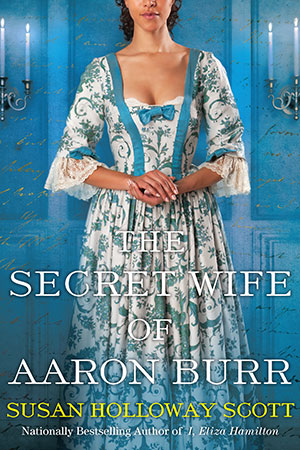We’re featuring red dresses this month, as did the ladies magazines of the 19th century.
~~~
PLATE 40.—PROMENADE OR CARRIAGE COSTUME.
This dress, when divested of the spencer, or jacket, exhibits the
EVENING OR OPERA COSTUME,
PLATE, 41.
In order to render these commodious habiliments the more clearly understood by our readers, we shall commence with a description of the Evening or Opera Costume: which consists of a round robe of morone or crimson-coloured Merino, kerseymere, or queen's cloth, ornamented round the bottom and up the front with a fancy gold embroidered border. The bodice is composed of satin, or velvet, of the same colour, trimmed round the bosom and sleeves with gold braid and narrow swansdown; the front of the bodice richly ornamented with gold and pearl buttons. A gold band and pearl or diamond clasp confine the bottom of the waist, with a gold frog pending on each side, inclining towards the back of the figure. The robe is laced behind with gold cord. Hair disposed in dishevelled curls, falling on the left side, and decorated with clusters of variegated autumnal flowers. Necklace, composed of a treble row of pearl, white cornelian, or the satin bead, confined in front with a diamond clasp. Ear-rings and bracelets to correspond. Slippers, of crimson velvet, ornamented with gold fringe and rosettes, though we recommend those of white satin in preference. White kid gloves, below the elbow. Fan, of richly frosted silver crape.This dress, when divested of the spencer, or jacket, exhibits the
EVENING OR OPERA COSTUME,
PLATE, 41.
 The great convenience and novel attraction of this dress, consist in its admitting of a spencer of the same material as the robe (as seen in our promenade figure), which is richly ornamented, à la militaire, with gold braid and netted buttons, forming a sort of epaulette on the shoulders. The spencer is embroidered up the seams of the back, on the shoulders, and cuffs, to correspond with the bottom of the robe. This spencer, when worn over the evening dress, affords at once both comfort and utility; and, with the addition of a straw or velvet hat, ornamented with feathers, and half-boots or Roman shoes, constitutes a most attractive and appropriate Carriage or Promenade Costume. The convenience as well as becoming properties of this seasonable habiliment, will be duly appreciated by such ladies as are in the habit of attending the theatres or private evening parties, affording a compact and comfortable protection from a damp and cold atmosphere, and which may be easily relinquished on entering the drawing room. It were needless to observe, that this dress admits of being constructed in any colour, and of many suitable trimmings. It is the sole invention of Mr. Barry, tailor and habit-maker, 55, New Bond-street, where it is exhibited, and where orders are received.
The great convenience and novel attraction of this dress, consist in its admitting of a spencer of the same material as the robe (as seen in our promenade figure), which is richly ornamented, à la militaire, with gold braid and netted buttons, forming a sort of epaulette on the shoulders. The spencer is embroidered up the seams of the back, on the shoulders, and cuffs, to correspond with the bottom of the robe. This spencer, when worn over the evening dress, affords at once both comfort and utility; and, with the addition of a straw or velvet hat, ornamented with feathers, and half-boots or Roman shoes, constitutes a most attractive and appropriate Carriage or Promenade Costume. The convenience as well as becoming properties of this seasonable habiliment, will be duly appreciated by such ladies as are in the habit of attending the theatres or private evening parties, affording a compact and comfortable protection from a damp and cold atmosphere, and which may be easily relinquished on entering the drawing room. It were needless to observe, that this dress admits of being constructed in any colour, and of many suitable trimmings. It is the sole invention of Mr. Barry, tailor and habit-maker, 55, New Bond-street, where it is exhibited, and where orders are received.—Ackermann's Repository, 1813 (December issue)







 One of us --
One of us -- 


